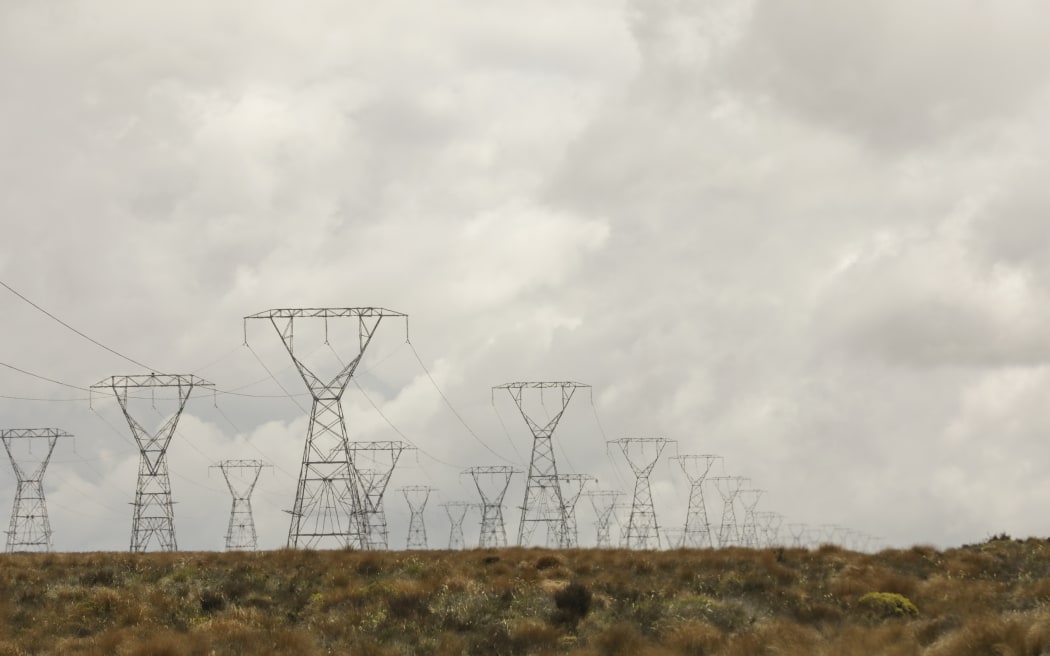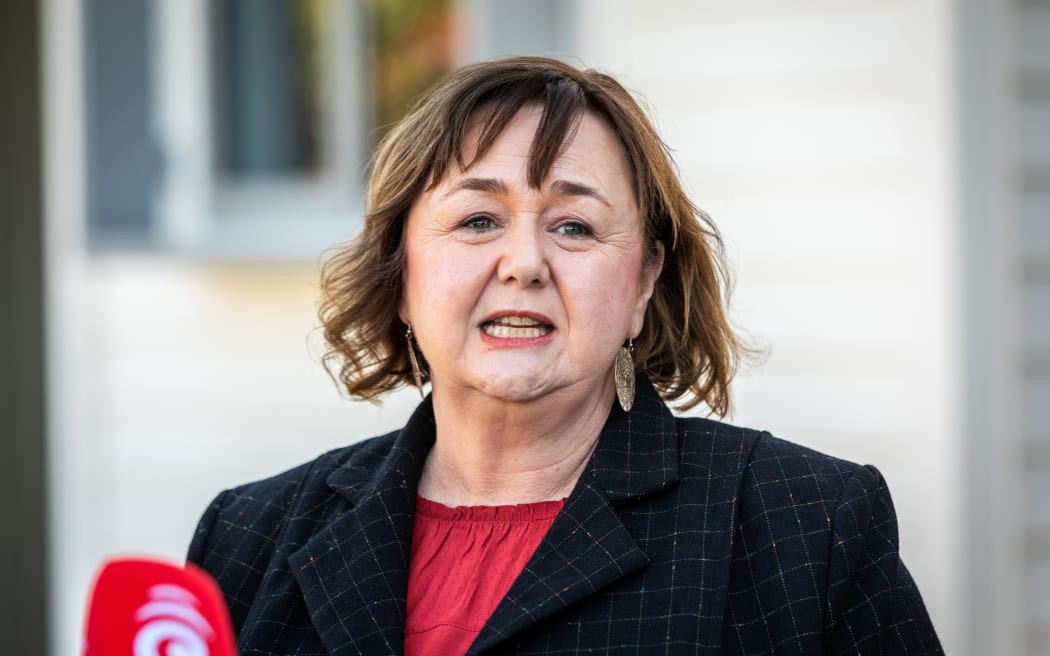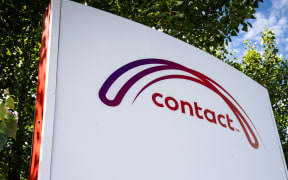
X Development has been working with New Zealand's Vector energy on electricity distribution ideas (file image). Photo: RNZ / Rebekah Parsons-King
An offshoot of Google has lobbied the government hard over electricity projects and had multiple meetings with Minister of Energy Megan Woods.
Woods initiated the meetings and was "very excited" by the huge US company's so-called "moonshot" ideas.
Officials told her Google saw New Zealand as a "unique" test-bed and was looking to expand a technology prototype here, and "may be looking for ministerial endorsement".
Woods had one meeting with the top executives in 2022 and four more in the last half of last year, including touring Google's Computer History Museum in Silicon Valley a year ago.
The interactions are outlined in hundreds of pages of emails and briefings, released after RNZ asked more than a dozen ministers what lobbying they had experienced from the three US tech giants; Google, Microsoft and Amazon.
Google is jockeying for position and partners in the massive global energy decarbonisation market.
- Read more: Google X, Megan Woods documents, August 2023 (3.8MB)
The potential is huge: For example, the world's biggest fund manager, BlackRock, this month did a deal with the New Zealand government to launch a $2 billion investment fund for renewable energy here.
Google's experimental arm, called X (not to be confused with Elon Musk's X, formerly Twitter) has been running a trial since 2021 with the country's biggest distributor of electricity and gas, Vector, in Auckland, and sought and got "ministerial endorsement" for that.
It has at least two other partnerships like this, in the US and Chile, in a project called Tapestry that aims to develop a way of analysing masses of data to "visualise" electricity networks to make them more efficient.
More recently, X has made approaches to the national grid operator Transpower and alternative energy agency Ara Ake, though nothing solid has eventuated, according to those two Crown entities.
Tapestry was "X's moonshot for the electric grid", the California firm's vice president, Australian Audrey Zibelman said, around the time she first met with Megan Woods. Woods' advisors repeated this phrase in ministerial briefings.
Woods expressed interest in August 2021 in meeting Zibelman, and they met a month later. She also tried to get the US Department of Energy's Assistant Secretary for Energy Efficiency and Renewable Energy involved, the OIA documents said.

Megan Woods Photo: RNZ / Nate McKinnon
X's access to the minister went hand in hand with access to the market.
"X and Vector seek ministerial endorsement," a briefing to Woods ahead of the meeting said.
"X may be seeking your endorsement for the technology demonstration project on the basis that it may encourage other electricity distribution businesses, or Transpower, to consider their own involvement."
X was "semi-secretive" and the government was not entirely sure what it was doing with Vector, the briefing said.
However, two weeks after the meeting, Woods' office put out a media statement: "Government welcomes collaboration between Vector and X".
Why New Zealand? X needed "vast quantities of data" for its computer models to create a digital "twin" of the real world, the papers said.
It had reached a point where it needed to collaborate with national and regional grid operators.
New Zealand's attraction was its electricity generation, transmission and distribution was set up within one jurisdiction.
"This, alongside X's existing relationships with Vector, may position New Zealand as the ideal testbed for a whole-of-grid technology demonstration project."
In handwritten notes, an official added: "Minister is very excited in this work ... Goal is to get whole system up and running in the next year or two. Could NZ be one of the early partners they work with . Minister - real useful to get security agencies involved."
An online meeting was then scheduled for November 2021, for X, Woods and her fellow minister James Shaw. Later, X's strategic manager wrote: "Glad to hear next steps from Minister Woods and [MBIE's] Innovative Partnerships will be happy to pick up where they left on in engaging with X."
Woods' office told RNZ she met with X to discuss their decarbonisation innovation and their activities in New Zealand, and visited X's head office in California in 2022 to hear about some of their early-stage innovation projects.
Vector told RNZ it never asked the government for any money.
"The only meetings we've had with X and the government were to explain the work we're doing, as a successful engagement from a NZ-listed company and a major US tech firm for the purposes of having sophisticated tools to manage future complexities," it said.
"At no point did we seek any funding as the meeting was only to provide information on this work."
The ministerial documents said that once the Vector trial was made public, talks could go on more openly with electricity distribution businesses and Transpower.
Transpower told RNZ last week it had talked to a range of tech providers including Google X about ways to support management of the national electricity transmission grid and power system.
"We have not signed any agreements to integrate specific products or innovations but we are continuing to discuss with them how they may be able to support our work," Transpower's strategy and customer general manager Chantelle Bramley said in a short statement.
But officials told Woods about a possible weak point.
"There is some criticism that X has not been able to successfully commercialise many of its moonshot initiatives," they said in more than one briefing.
For example, a stratospheric internet balloon technology X shopped around from 2013 to 2021 had not taken off here.
Vector told RNZ its own trial with X was "a 'moonshot' project, which means there is considerable uncertainty over final outcomes".
"However, the potential solutions are hugely significant for electricity networks around the world as they become ever more critical in the face of increasing demand for clean electricity and decarbonisation."
X was interested in more than just grid visualisation. Zibelman last year introduced a top Woods adviser to a US company that makes batteries "because of NZ's interest in storage, particularly long-duration storage". An official from Ara Ake visited their factory.
Various communications about X referred to "ongoing work … with Minister Woods", and "progressing the actions", and "suggested next steps".
The Americans asked her office for help to "build a connection" with Māori partners, in what it called its "alpha project".
A Woods advisor obliged with contacts within the innovation side of the Ministry for Business, Innovation and Employment. One of them was "very well placed to pick up any opportunities or issues from Google's perspective" in the research and science portfolio, the advisor told X.
Google sent through to Woods' people reports it had helped write, such as 'Public-Private Approaches to Decarbonising Power Systems in APEC'.
A year on from the first meeting, X was front of the queue. Woods was headed for a clean energy ministerial meeting in Pittsburgh, US, and her advisor emailed California: "We are in the process of locking in bilaterals and we are giving X first pick of the time slot".
"Do you think the minister would prefer Mexican or American food?" was the reply.
Woods and Zibelman, along with another X vice president, met for Mexican in September 2022, by which time the purpose had expanded "to discuss opportunities for collaboration between X, the New Zealand Government and Ara Ake".
A Crown agency, Ara Ake, got $70m of funding in Budget 2023 to look into low-emissions energy options for the next decade.
It lists work with X among 31 other projects. Ara Ake's chief executive emailed Zibelman a year ago: "Do you have some time this week to workshop the areas of interest?"
This week Ara Ake told RNZ: "We don't have a formal partnership with Google X.
"But we are interested in understanding how their Tapestry initiative is progressing, as a greater digitisation of the electricity system plays an important role in transitioning to a low-emissions future, globally."
The OIA emails show Google, Microsoft and Amazon often used the high-profile Wellington firm Capital to lobby government.
Many email threads involving Woods or other ministers' offices, included Capital's Neale Jones or Mike Munro, both of whom had previously been chief of staff to Prime Minister Jacinda Ardern. Jones was also earlier chief of staff to former Labour leader Andrew Little.
Munro told a top Woods adviser last November: "There is an opportunity for Megan to have an online chat next week with Andy Ott, the technical director on Tapestry, …. the American guru on low-carbon energy systems … Given the current challenges in the market I think it would be highly valuable for her or her officials/advisors to hear from Ott."
In late 2020, Neale Jones emailed an advisor to minister David Parker: "Just wondering if you are free for a chat some time - could do a coffee or a beer - on a few issues in your portfolio [Parker was Minister for the Environment, Minister for Oceans and Fisheries, Minister of Revenue and Associate Minister of Finance]."
Two of the "issues" were blanked out in the OIA, but the third was, "Digital services tax - I represent a range of clients in the tech sector including Amazon, Apple, Expedia, Uber and Google who might be touched by this. Keen to get an update on where Minister's thinking is," Jones wrote.
Other communications, from Google to the Minister of Internal Affairs Barbara Edmonds in March this year, said it wanted to share "policy levers we encourage New Zealand not to adopt" when it came to public media.
Few of the other hundreds of pages of emails reveal much of note, except the understandable attraction to Big Tech of having ready access to the government.
RNZ has approached Google for comment.







